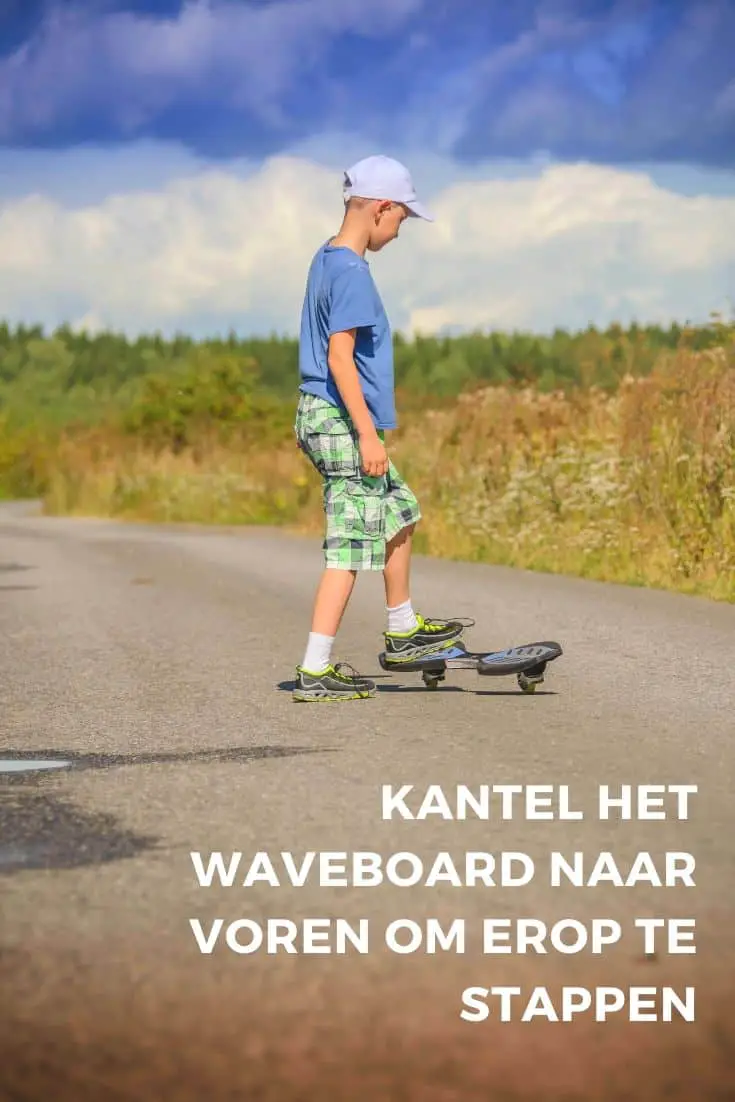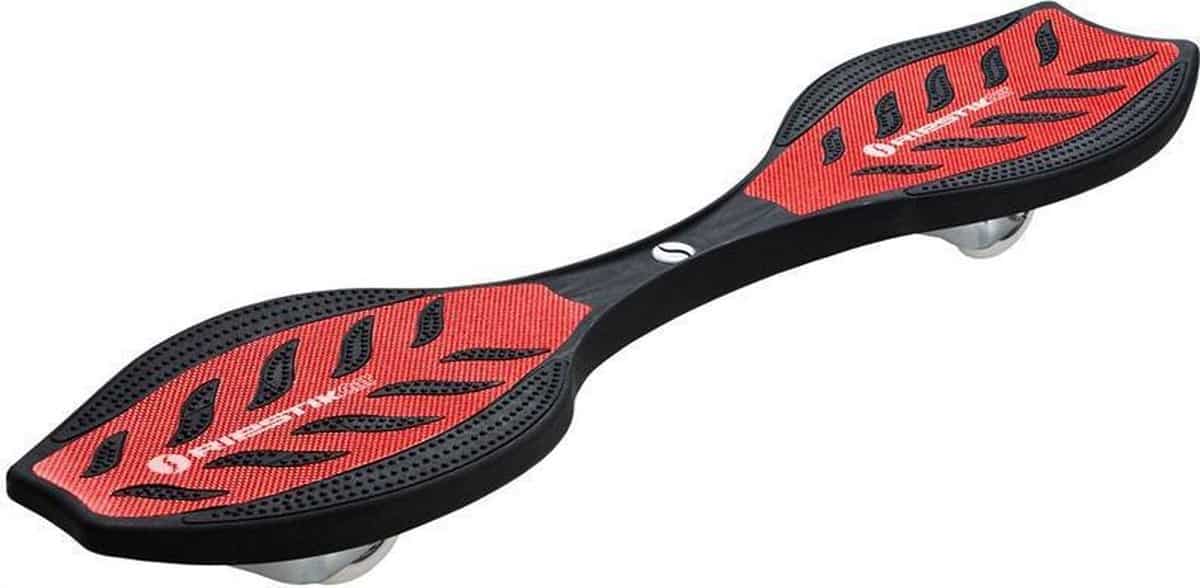Waveboarding: Street Surfing how do you do that?

Always something to do for the holidays or rainy day?
Play Choice now has the ultimate activity book collection, with over 60 pages of fun coloring pages and educational puzzles.
A wave board is a new type of skateboard that was introduced to the market in 2004 with two wheels next to each other that can rotate independently of each other. It works by means of a flexible platform connected to a torsion bar with two wheels that can rotate independently of each other.
A wave board has only 2 wheels instead of 4 and a board that can bend while riding.
The flexibility of a wave board appeals to those who want to relax and ride a flat street or those who want to participate in obstacle courses with difficult obstacles.
Watch this instructional video on how to ride it, or read this in-depth post for more details:

From toddler to toddler activity book collection
Educational games and coloring pages for 3 to 6 years
Your toddler and preschooler will love this e-book, along with the accompanying printables. He or she can play with it at every stage of development, together with mom and dad.
Buy at Bol.comWhat we discuss in this comprehensive post:
Learning to ride the Waveboard
Get ready with a helmet and protective pads.
Always wear a helmet and protective pads when riding a wave board, doubles as a beginner.
Secure your helmet so it fits snugly on your head and make sure your padding is not loose.
Tilt the waveboard forward to step on it

- Tilt the waveboard forward so that one edge of both panels touches the ground.
- Step back on both panels and push your heels back so that both panels flatten and you are now hanging above the ground and on the wave board.
Determine whether your right or left foot is best forward
Stand quietly on your wave board before you leave.
First, put your left foot in front (known as standard style) and then your right foot (known as goofy style).
Consciously consider which foot feels stronger in the front.
- Once you choose a style, every foot you put in the front is called your 'dominant foot'.
- Whichever foot you placed at the back of the board is known as your 'non-dominant foot'.
The only way to know which method is best for you is to try it out for yourself.
Everyone's dominant foot can vary, so choose the method that makes you most comfortable.
Move by pushing with your non-dominant foot.
After you have chosen your dominant foot, plant it at the front of the wave board and make sure you are stable.
Then gently push yourself forward with your non-dominant foot by pushing against the floor.
Once you've done that, put your non-dominant foot on the tail of the board.
Don't start wiggling just yet, just enjoy the short movement and get a feel for the board under your feet.
Gently move your non-dominant foot to gain speed.
Once you are confident in your balance, you need to move your non-dominant foot to gain speed.
Slowly move your non-dominant foot back and forth as you move forward as if you were a snowboarder.
Once you are able to confidently wiggle your non-dominant foot, try moving your hips with your non-dominant foot so that your lower body is now also wobbling left and right.
This will propel the board forward and speed you up.
Practice turning forward
Practice turning by pushing your feet in opposite movements.
Now that you know how to gather some speed when moving on the wave board, gently tilt your dominant foot to the right and your non-dominant foot to the left.
This makes you turn right. If you tilt your dominant foot to the left and your non-dominant foot to the right, you will go to the left.
Practice wiggling to get speed, then do slow turns, followed by more wiggling until you can do a basic circuit.
Learn to brake
Stop the wave board by leaning forward. Stop wiggling to slow your speed, then lean forward on the wave board and tilt your feet forward.
Stops the wave board.
Alternatively, you can just jump off the wave board and it will stop by itself.
How do you make turns?
To turn on a waveboard, you have to move your body to the side you want to turn to. For example, if you want to turn left, move your body to the left. In addition, you can also turn your front foot to the left or right to change the direction of the waveboard.
Trying basic tricks
Dive down while riding for your first trick.
As you continue to drive, slowly bend your knees until you are squatting but still moving forward.
Then, once you've held the position for a few moments, get up again.
Skate on ramps or ramps for airtime
After you are confident on a wave board, the next step may be to learn a few tricks and practice achieving airtime.
Most cities have a skate park with bowls, large pits in the ground that you can use to propel yourself up.
Try to gain some speed and go over slopes first to get an idea of how the wave board functions in the air.
Once you have more confidence in the air, you can try going up on the side of a bowl.
In the air, grab the top of your board with your closest hand and bring your knees to your chest.
Once you reach this position, return to your normal position and try to land the trick.
This is called a grabber.
Grab the middle bar of the waveboard for a technical trick.
As you move forward, slowly bend your knees and grab the center bar securing the nose and tail of the waveboard and keep moving.
Once you've held the position for a few moments, gently get up again.
Test your agility by picking up buckets while riding.
Before you step on your wave board, put several buckets on a track.
Then get on your wave board and try to ride in a smooth motion past the buckets and pick them up while you collect them.
Try filling the buckets with water for more of a challenge.
The amount of water you spill from the bucket indicates the level of control you have on the wave board.
Also read: the best waveboards reviewed, with luminous wheels or just for beginners
Riding your Waveboard in different ways
Glide through the streets as a relaxing pastime.
Cruising
If you just want to relax on your board, hit the local streets and ride them up and down to explore new areas.
There's no pressure to go fast, so this method is ideal if you're just getting started.
To race
Learn to race on waveboards with friends. Grab some friends who also have waveboards and with a set of cones you can build a track to race around.
This is an explosive form of wave boarding and is a great practice for turning and building speed.
With a set of cones, set up a typical 8 figure in your race track. Have a few practice rounds first to get a feel for the turns before challenging a friend.
Have someone tell you when to start, then race around the track for a specified number of laps until someone wins the race.
Experiment with the angles and route of your track so that you always challenge yourself to develop a different skill.
If your group of friends only has 2 waveboards, you can set up a relay race where the original rider jumps halfway through the race or after a full lap.
Hill driving
Ride down some hills for an adrenaline rush. Waveboarders drive down big hills to gain great speed.
Start on a shallow downhill hill and drive down it, winding side to side like a skier would descend a mountain slope.
Once you've gained confidence by cutting smaller hills, try some bigger ones.
Protective gear is crucial when it comes to speed.
What are the benefits of waveboarding?
Waveboarding is a fun and challenging way to move your body. It takes a bit of practice to master the right move, but it offers multiple options for riding, jumping, and turning. It is a natural way of moving that makes your body strong and gives you a feeling of freedom.
Is wave boarding a good outdoor activity?
Yes, wave boarding is an excellent outdoor activity. It offers a fun and active way to exercise outdoors and improve your balance. Additionally, practicing wave boarding outdoors can help children absorb fresh air and vitamin D, which is essential for their overall health and well-being.
It's a great choice for kids and adults looking for a fun way to stay active and enjoy the outdoors.
From what age is wave boarding suitable?
Waveboarding is suitable for anyone looking for a new challenge and wants to experience a different way of riding. It is a great sport for beginners and experts. It does take some practice to master the right move, but with the right steps and guidance, anyone can learn it.
Children can already starting to learn wave boarding at the age of 5, especially if there is already one at home for an older brother or sister, or even for the little ones themselves. Wave boarding is as simple as getting on and going, and because of the limited speed, the risks are minimal.
What is a good type of wave board to start with?
When buying a good wave board it is important to pay attention to the size of the wheels, which are usually between 68 and 80 mm. The hardness of the wheels is recommended between 84 and 90A, and it is wise to swap the two wheels over time to help them wear more evenly.
As for the material of the board, you can choose between plastic, which is lighter and lasts longer, or wood, which is more authentic and easier to repair if necessary.
Overall best waveboard
A maximum weight capacity of 110kg and has a concave deck design with spikes and traction blocks for good grip to prevent slipping.
Waveboarding safety
Waveboarding is a fun and exciting sport, but safety should always come first. Here are some important facts to keep in mind:
- Waveboarding can be dangerous if you don't know what you're doing. Even if you are an experienced wave boarder, you should always be careful and take proper precautions.
- Beginners are more likely to get injured than advanced wave boarders. If you're new to the sport, take extra care and take the time to learn the basics before attempting more difficult maneuvers.
- It is very important to wear proper protection, such as wrist guards and a helmet. This protection can prevent or reduce serious injury if you fall.
- Waveboarding should only be done on terrains suitable for the sport. Tiles and other hard surfaces can cause serious injuries if you fall.
- It is important to know how to brake and stop before you start waveboarding. Not knowing how to stop can lead to serious injuries.
Safety precautions for beginners
As a beginner, it is important to be extra careful and take proper safety precautions. Here are some tips:
- Always wear wrist guards and a helmet. This protection can prevent serious injuries if you fall.
- Start on a level surface and practice steering and braking before trying more difficult maneuvers.
- Do not go too fast. Take the time to get used to the waveboard and slowly build up the speed.
- Waveboard only on areas suitable for the sport, such as skate parks or special waveboard areas.
- Pay attention to other people around you and make sure you don't endanger anyone.
FAQ about waveboards
What is street surfing?
Streetsurfing is very similar to skateboarding, but also combines elements of surfing and snowboarding.
Street surfers ride a board that has a 'paddle-like' shape and has one wheel on each side. Each wheel rotates 360 degrees to allow the board to rotate freely.
Why a waveboard instead of a skateboard?
Although waveboards are more difficult to master than skate or longboards, the unique shape of the wave board allows for much more complex, precise tricks and sharp turns.
Is riding a Waveboard or RipStik good exercise?
Hell yes! Riding will not only strengthen your core and legs, but it will also help improve your balance. Coordination is required to ride the board.
What tricks can you do on a waveboard?
Just like with skateboarding, you can also do a lot of tricks with a wave board. You will be surprised how versatile this cool board is!
Take a look here for some inspiration:

Always something to do for the holidays or rainy day?
Play Choice now has the ultimate activity book collection, with over 60 pages of fun coloring pages and educational puzzles.
Joost Nusselder, the founder of Speelkeuze.nl is a content marketer, father and loves trying out new toys. As a child he came into contact with everything related to games when his mother started the Tinnen Soldaat in Ede. Now he and his team create helpful blog articles to help loyal readers with fun play ideas.
